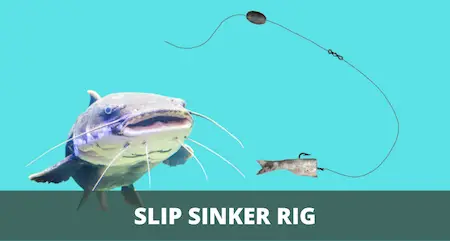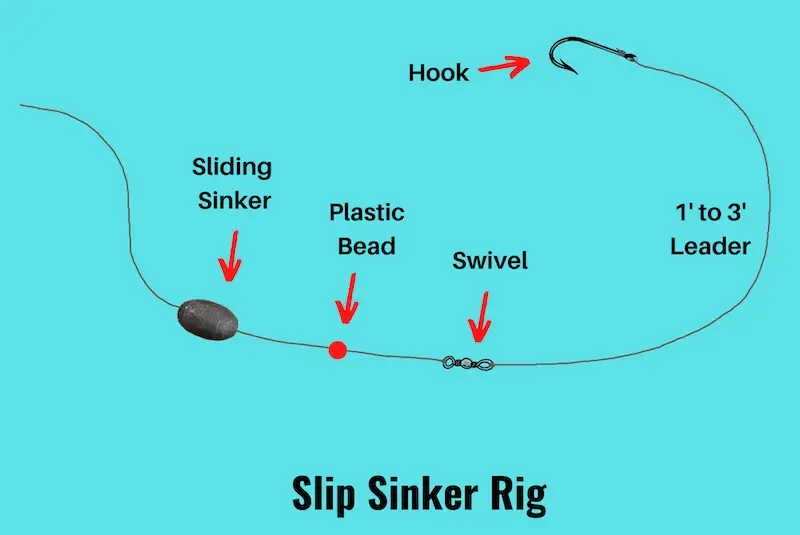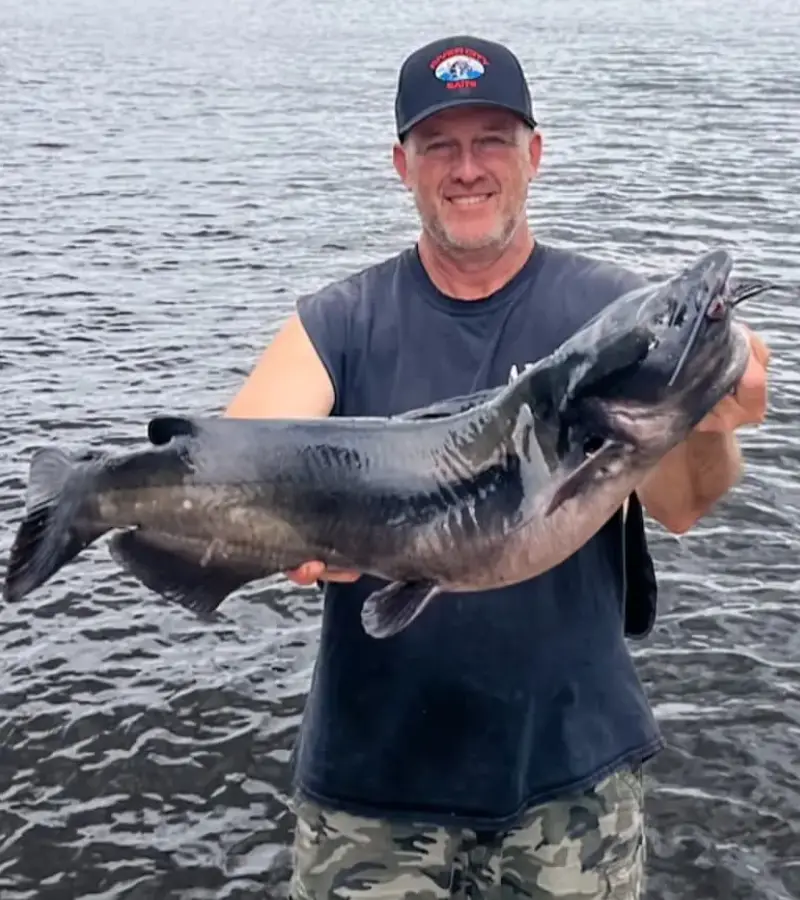Slip Sinker Rig 101 (Setup and Fishing Guide with Pictures)
PUBLISHED 16 AUGUST 2023
by Robert Ceran
Are you planning to throw a slip sinker rig, but aren’t sure how to set it up, or how to fish it for optimal results?
While the slip sinker rig is without a doubt one of the most versatile bottom fishing rigs that catches fish anywhere, it can be tricky to set up and to fish it for the best results.
In this article I’ll walk you through setting up the slip sinker rig, and will aso cover what bait to use with it, and how to use it to catch more fish.

What is a slip sinker rig (and what is it good for)?
A slip sinker rig is a bottom fishing rig that consists of a sliding sinker that glides up and down on the main line, as well as a swivel attached to a leader and a hook.
The slip sinker setup is one of the most basic bottom fishing rigs, and is a great setup for targeting fish that feed on or near the bottom. It is most often used for catfish, walleye and trout, but also comes in handy for crappie and bass fishing.
Among the many advantages offered by this setup are its ease of rigging, as well its versatility – it can be fished either as a static bottom fishing rig, a drift fishing rig, or actively retrieved.
Slip sinker rig vs Carolina rig
If you compare the components and structure of a slip sinker rig with a Carolina rig, you’ll notice they seem virtually identical.
This is absolutely correct – in fact the main difference between these bottom fishing rigs is that the slip sinker rig is usually made with heavier components and used by catfish anglers, while the Carolina rig is more lightweight and mainly used by bass anglers.
However, the two setups are largely interchangeable, and you can use either of them for targeting a wide range of fish species.
The slip sinker rig is also similar to the Lindy rig, except that the latter is rigged with a no-snag Lindy sliding weight.
Slip sinker rig components
Below are the tackle components you’ll need for a slip sinker rig:
- Sliding bullet or egg sinker
- Plastic bead
- Barrel swivel
- Hook (treble hook, circle hook, or octopus hook)
- 10 to 50 lb test monofilament leader
Note that the strength of the leader and the size of the hook depends on what fish you want to target with this setup.
For catfish it’s advisable to use heavier line of up to 50 lb test, while for walleye, crappie, or perch you’ll want to downsize to 10 lb test or even lighter line. For finicky fish in clear water, you may even prefer to use a fluorocarbon leader.

Likewise, choose the size of the hook to fit the size of your bait: size 2 to 6 for whole dead bait fish or cut bait, and size 8 to 10 for worms or minnows.
For your main line you can use either monofilament or braided fishing line, depending on your preference. Braid has less stretch, which allows you to feel subtle bites better.
Why use a sliding sinker?
The advantage of a sliding weight is that it allows a fish to take the bait and pull the line through the sinker without feeling any resistance, which is great for targeting light biters that spit out the bait if they encounter the slightest resistance.
How to tie a slip sinker rig
Start by threading your main line first through the sliding weight, and then through the plastic bead, followed by tying the tag end to the barrel swivel.
The plastic bead isn’t absolutely essential, but helps to prevent the knot on the swivel from getting stuck inside the sliding weight. If it were to get stuck, this would prevent the weight from sliding up and down the line.
Next, tie your monofilament leader to the other eye of the barrel swivel with a palomar or uni knot, followed by measuring out 1 to 5 feet of leader. Finally, tie the other end of the leader to your bait hook.
Choosing the right leader length
The ideal leader length for this rig depends on whether or not you will be using live bait. As a rule of thumb, 1 to 1.5 feet is long enough for dead bait or cut bait, while a longer leader length is better when using live bait, as that will give it more freedom to move around in the water.
However, a longer leader also increases the chances of getting snagged on rocks, tree trunks, or other cover. So if you’re getting snagged a lot, it’s a good idea to shorten the leader length.
What bait should you use with a sliding sinker rig?
A slip sinker rig can be used with virtually any natural bait, ranging from nightcrawlers, hotdogs, cat food and marshmallows to entire dead bait fish, or cut bait fish (all of which are effective catfish baits).
For trout, the best bait to use with the slip sinker setup is powerbait, while nightcrawlers or small minnows can also work well. The latter two plus leeches are also the best baits to use for walleye fishing.
Finally, if you’re fishing with walking sinkers, you can also use artificial lures as bait, which is especially effective when using floating lures.
How to fish a slip sinker rig
The beauty of a sliding weight rig is that it can be fished in many different ways. The most popular technique with this setup is static bottom fishing, where you cast your rig out to a promising location, let it sink to the bottom, and then wait for bites.
Fishing a sliding sinker catfish rig
Another great way to fish a sliding sinker setup that works particularly well for catfish is by using it for drift fishing with a boat. You can let your boat drift with the wind on a lake, or with the current on a river, all the while letting your weight and baited hook slowly bounce along the bottom.
The advantage of drift fishing is that it allows you to cover a lot of ground, but static fishing with this rig also works well for catfish, especially in spots where you know catfish forage regularly.

Image source: instagram/@retired_guy_outdoors
When using the static approach, one of the best ways to detect bites is with a baitfeeder reel, which can be set up to allow line to be pulled off the spool freely, while alerting you to bites with a clicking sound.
For me personally, there’s nothing more exciting than hearing the bait clicker of your reel go off, and I know a hungry catfish has grabbed the bait and is making a run for it.
When fishing in lakes with a weedy bottom, it’s important to present your bait suspended above the weeds, to help catfish find it. In that case it’s better to fish a Santee Cooper rig, which is a variation of the slip sinker rig that uses a float rigged on the leader to lift the bait up in the water.
